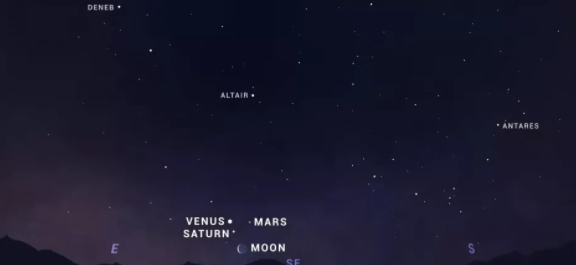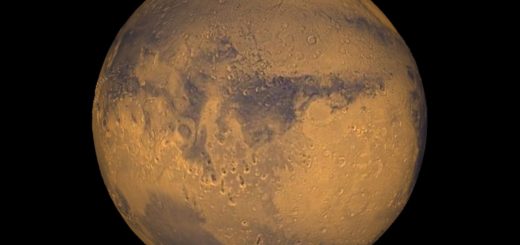Venus, Mars and Saturn form a celestial triangle before dawn: How to see it
You can spot them Sunday and Monday, before sunrise.

You can spot a triangular alignment of three bright worlds Sunday (March 27) and Monday (March 28) in the predawn hours.
Involved in this collection of worlds will be cloudy Venus, bright Mars and ringed Saturn. Also joining them on Monday will be the crescent moon, making this a bright group indeed. You can see this entire collection with the naked eye, but a bit more detail will be visible in binoculars or a telescope.
If you’re looking for binoculars or a telescope to see planets in the night sky, check out our guides for the best binoculars and best telescopes. If you need photography equipment, consider our best cameras for astrophotography and best lenses for astrophotography to prepare for the next planet sight.
To see the show, we recommend heading out at least 20 minutes before sunrise in your local region. So in New York City, for example, you will want to head out a little before 6:30 a.m. local time.
Look east, which should be easy to spot, especially on Monday, when the moon is bright in the sky. Venus will be the glittering world at the top ‘left’ of the triangle, as visible with the naked eye. The clouds surrounding the planet are highly reflective, and the world will shine at roughly -4.7 magnitude.
Slightly below Venus will be Saturn, the great ringed world. Saturn is dimmer right now, at roughly 0.7 magnitude. But you can still easily spot it with the naked eye; bear in mind that most people can see down to magnitude 6 in dark-sky conditions.
Finally, Mars will be to the right of both the planets. It’s creeping towards magnitude 1 and should be easy to spot, with its red color
As a bonus, you can try to spot Jupiter, although it will be much lower on the horizon (only two degrees above), making it hard to spot among buildings or light pollution. Jupiter is roughly magnitude -2 and may be more visible if you go out a bit earlier in the evening.
Thanks to the ecliptic (the plane of our solar system upon which the planets orbit), we see a lot of planetary alignments like this in our sky. The trio of planets should still be bright in the predawn sky in the coming days, so you can still keep an eye out for them if you miss the alignment due to clouds or scheduling issues.



 Creators of mankind
Creators of mankind Description of “Tall white aliens”
Description of “Tall white aliens” Where they came from?
Where they came from? About hostile civilizations
About hostile civilizations The war for the Earth
The war for the Earth “Tall white aliens” about eternal life
“Tall white aliens” about eternal life Video: “Nordic aliens”
Video: “Nordic aliens” Aliens
Aliens Alien encounters
Alien encounters The aliens base
The aliens base UFO
UFO Technology UFO
Technology UFO Underground civilization
Underground civilization Ancient alien artifacts
Ancient alien artifacts Military and UFO
Military and UFO Mysteries and hypotheses
Mysteries and hypotheses Scientific facts
Scientific facts


















